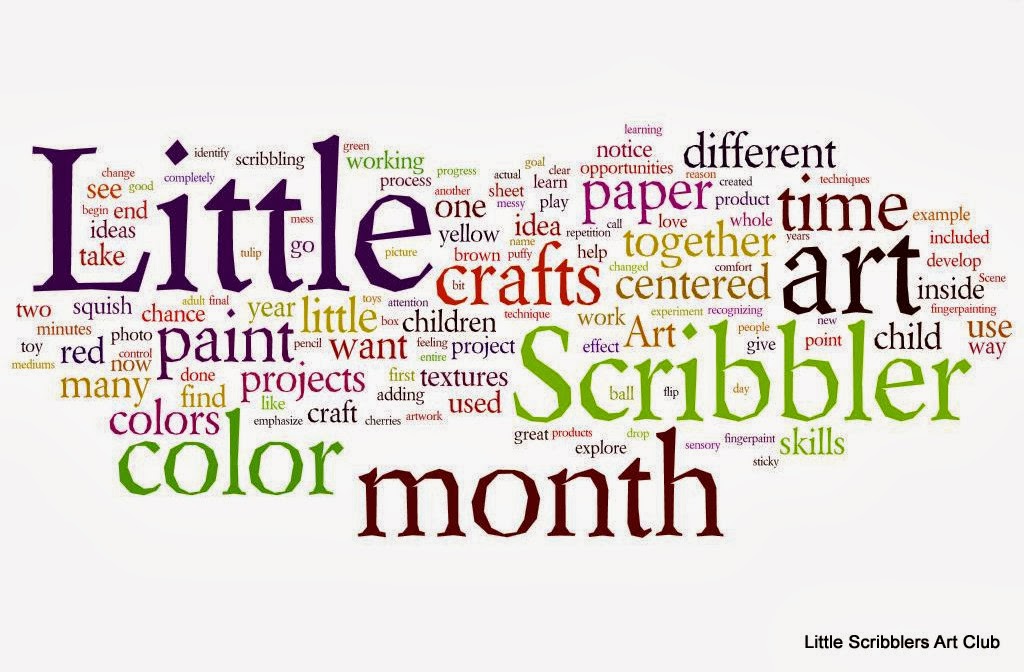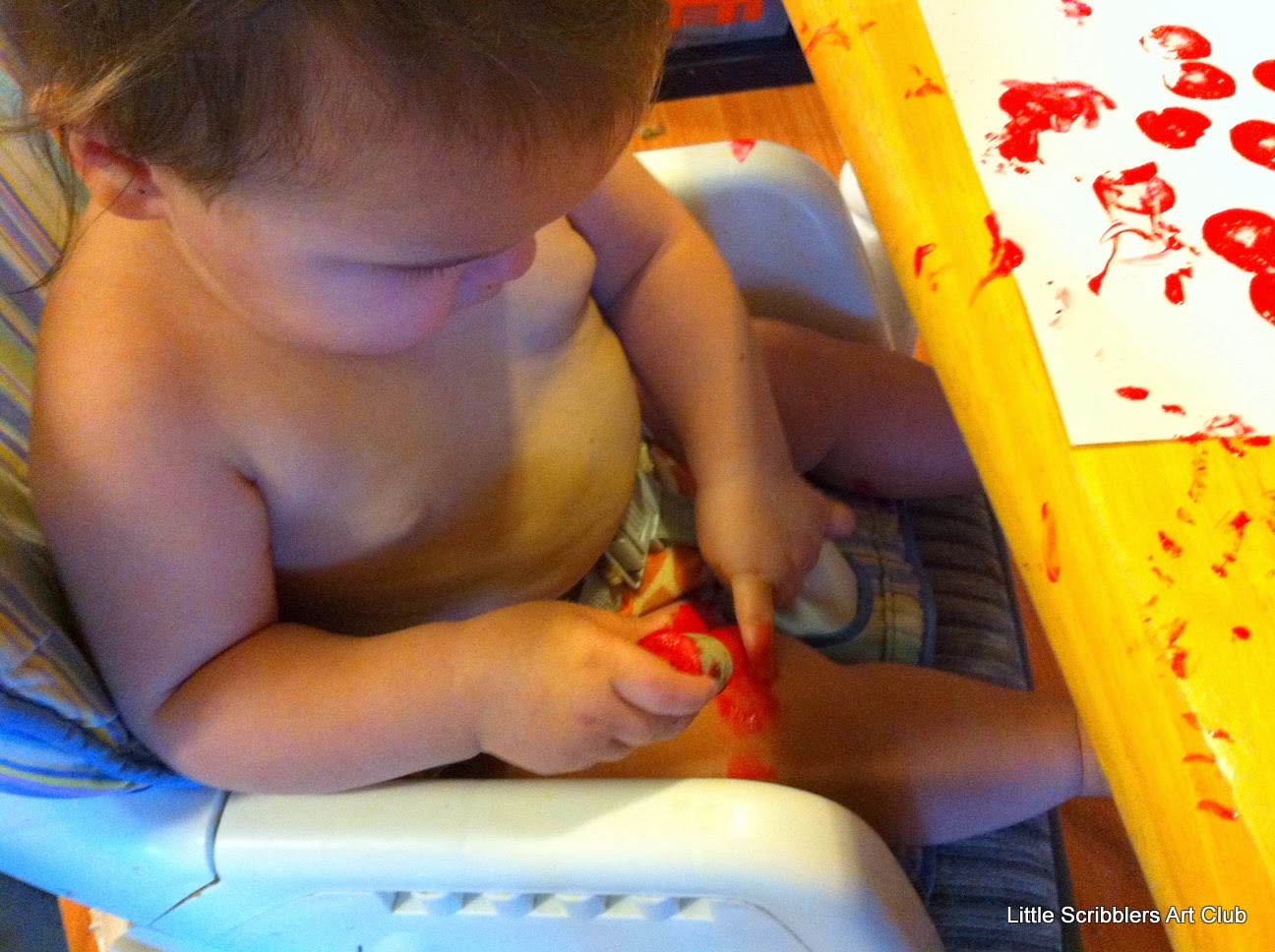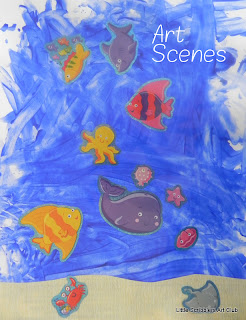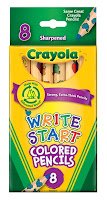1) Time Together (Social Interaction)
"Mommy, I love having art time with you." Let me tell you, that'll melt your heart one day. My now 3-year-old told me that just last week. And I have heard the same from parents who are doing art with their kiddos: it's time they love to spend together. Some find it de-stressing, as in stress-relieving; some love connecting after a long day's work; some just love talking and creating together.
2) Sensory Experiences
A child’s first intellectual learning comes naturally through his or her sensory experiences. Materials that expose children to different colors, forms, sizes, sounds, smells, temperatures, weights, and textures help them to learn about the world around them. The art process and art supplies Little Scribblers use provide many opportunities for sensory experiences.
3) Exploring the World
It goes without saying that we have an innate curiosity about what's around us. Art gives the opportunity to explore that as well as create representations of the natural world.
4) Gross and Fine Motor Skill Development
Creating art takes both sets of muscles; the big ones (gross) and the little ones (fine). Throughout development, children move from control over bigger movements to the more finite and delicate movements of the fingertips. Art gives children more experience, practice, and desire to control those muscles.
5) Pre-Writing Skills
Many things that seem like "just playing" are developing skills needed later for writing. Gross motor (upper body) muscle work, eye-hand coordination, processing sensory information, pushing, pulling, twisting, turning, squeezing, poking, pinching, tearing, crumpling, and stringing are just a few examples of art techniques that develop muscles and hand skills needed for manipulating a writing tool.
6) Enhancing Language (a pre-reading skill)
All of the words a child hears in the beginning years of life set the stage for reading. The more you talk and read with a child, the more vocabulary they have to apply to reading later in life. Art involves vocabulary that a child might not otherwise hear.
7) Self-discipline & Boundaries
Art is often an experience that comes with some boundaries and responsibilities. While this can be frustrating for both parents and kids alike, even young children can learn how to use art tools and where the final product is expected to go. :) Experience, exploration, and gentle guidance will eventually get them there.
8) Problem-solving
Many problem-solving opportunities crop up through art. Young children are starting with the basics: space and layout, construction and deconstruction, how art supplies react to their actions and how they want them to act, color intentions and color realities, how paper or other art surfaces absorb the medium, muscle control, etc.9) Confidence & Self-concept
A child's confidence builds as (s)he contributes to a final art piece, or even completes an entire project solo. Specific praise ("Wow, look at how straight you made that line!") and placing final projects in places of honor (refrigerators, walls, windows, etc.) makes a child feel valued for his or her contribution and achievements.
10) Scientific Concepts
Cause and effect, changes in matter (color mixing, saturation, evaporation), chemical changes (puffy paint), biological diversity (nature as art tools), and more can be explored through art. Some projects even lend themselves to the scientific process.
11) Personal Expression
Toddlers, two-year-olds, and some children with special needs have difficulty expressing themselves. It's part of what innately drives us to learn to communicate. Sometimes art is just a fun way to spend some time, sometimes it's a way to relax, sometimes it's an expression of something important in the eyes of the creator, no matter what age or ability.
12) Initiative
Ever wish for a few moments just to do the dishes? After working with my own Little Scribbler for three years with art supplies and techniques, I hit the mother lode one day. We had a bunch of incomplete crafts from a summer art class we went to, so I set them out around the table and said, "go!" I had about half an hour of free time while she was able to do her projects completely on her own (aside from the octopus that I helped with pictured below). These days, with a not-quite-3½-year-old, she grabs some paper, her colors, and sits down for some art time completely on her own and without prompting! ...kind of hilarious that the first benefit is time together and this one is essentially time apart. :) We need some of both, right?!

Added benefits of Little Scribblers Art Club:
1) No Internet research needed: it's all planned for you.
2) No bead crafts: it's safe and developmentally appropriate.
3) No trips to the store: it's all there and delivered to your door.
4) No foam crafts: it's eco-conscious.
www.littlescribblersartclub.com






































